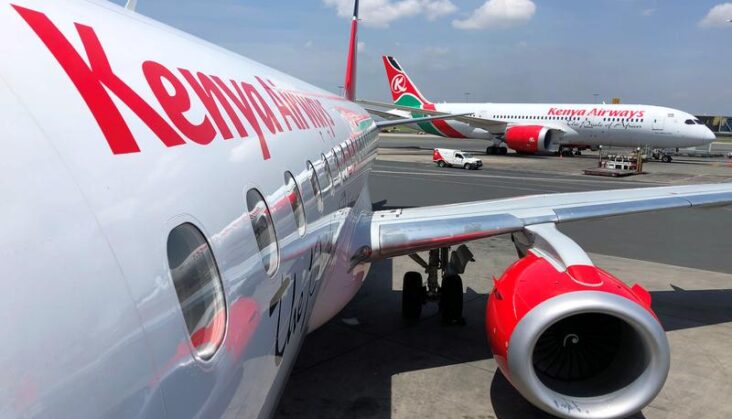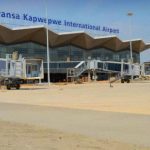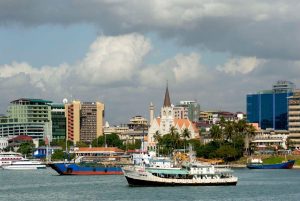Kenya Airways needs continued government support as it remains in a “precarious financial position” with recovery to pre-COVID levels unlikely before 2024 given delayed vaccinations in Africa, says chief executive Allan Kilavuka.
Briefing investors online on the airline’s half-year results ending June 2021, he said: “Definitely, the company needs financial support, and this is not a secret. We still need financial support from our principals or elsewhere. We are in a negative equity position, which means we are insolvent as an organisation, obviously made worse by the pandemic,” reports Kenya’s Business Daily. Kilavuka did not specify the amount needed.
Kenya Airways’ liabilities reportedly outstripped its assets by KES73.8 billion shilling (USD672.3 million) by June 30, 2021, compared with KES64.1 billion (USD583.5 million) at the same time last year.
The airline last year borrowed KES11 billion (USD100 million) from the state after it was grounded due to the pandemic.
During the first half of 2021, operations continued to be severely impacted by the COVID-19 crisis, resulting in a KES11.49 billion (USD104.6 million) net loss in the first six months, taking its accumulated losses to more than KES127 billion (USD1.1 billion) – even though the latest results were a 19.8% improvement on the KES14.33 billion (USD130.5 million) posted at the height of the first COVID wave in the first six months of 2020.
The Group’s total revenue during the 2021 half-year reduced by 9% to KES27.354 billion (USD249.145 million) as a result of the cessation of domestic scheduled operations in April 2021, travel restrictions, and lockdowns in the carrier’s key domestic and international markets including the UK, India, China, the UAE, and the US, the airline said in a statement.
Kenya Airways said it currently served 40 international destinations and two domestic routes with significantly reduced frequencies of about 65% compared to 2019. Before the pandemic, it had flown to 40 African destinations. However, COVID-19 restrictions by various states, a slow vaccination roll-out resulting in less than 2% of Africans being vaccinated, and stringent travel restrictions on African travellers in European markets all contributed to a 20% drop in passenger uplift and a 17% decline in passenger revenue to KES20.2 million (USD184,000). Chief Financial Officer Hellen Mathuka said the airline held KES10 billion (USD91 million) in unflown revenue from unused tickets, down from KES13.9 billion (USD126.5 million) in December.
However, cargo revenues increased by 60% as the Group increased cargo uplift by 500 tonnes a month.
Chairman Michael Joseph told investors the company remained focused on cash conservation. “The company has exploited opportunities of raising much needed revenue through passenger charters and ramped up cargo operations. Other initiatives undertaken by management include partnerships with other airlines, lease rentals re-negotiations, payment plans with suppliers and partial deferment of staff salaries.” The said focus for the rest of 2021 would be the survival and the rebound of the company.
Kilavuka said Kenya Airways would continue to adopt “an agile approach in responding to the current dynamic marketplace”. “Our focus is on business recovery and to continue contributing to the rebuilding of economies and communities impacted by the pandemic. Restoring customer confidence for business and leisure travel will be key to growing demand, as well as creating agile and nimble business models that are sustainable and responsive to the customer’s needs.”
The carrier managed to save KES1.5 billion (USD13.6 million) in the past six months after successfully renegotiating aircraft leasing terms with its lessors. This, Kilavuka said, was expected to yield savings of up to KES4.9 billion (USD45 million) by the end of December 2021. “We have mainly focused on operating leases. What we have done is negotiate with our lessors so that they can amend the lease terms. These were long and difficult discussions, but in the end, we have been able to extract some amendments to the leases,” he explained. “The bottom line is to look at the least fleet ownership cost that we can get.” With its operations greatly reduced during the pandemic, the carrier had negotiated to only pay hourly rates instead of fixed leases for when the aircraft were flying.
The airline’s fleet comprises eight B737-800s, two B737-300(F)s, two B737-700s, and nine B787-8s, as well as fifteen ERJ 190-100ARs, the ch-aviation fleets advanced module reveals. Nineteen of its aircraft are on operating leases from amongst others Aviation Capital Group, BOC Aviation, DAE Capital, DVB Bank, GECAS, Goshawk, Macquarie AirFinance, and Nordic Aviation Capital.
The carrier has also saved KES155 million (USD1.4 million) from ongoing workforce reduction and payroll reviews, reports Citizen TV. In 2020, it had cut KES3.4 billion (USD30.9 million) from payroll-related costs as it began implementing a blanket reduction to staff salaries.
However, the airline reportedly has defaulted on local lenders who now only maintain a revolving credit facility agreed with the company as part of the restructuring of KES17 billion (USD155 million) worth of unsecured loans in 2017. International lenders like JP Morgan and Citibank have secured their loans through the airline’s fleet.
As reported, the Kenyan government, which holds a 48.9% stake in the carrier, plans to fully re-nationalise the flag carrier by creating a National Aviation Council and a holding company, Kenya Aviation Corporation, that will house three subsidiaries: Kenya Airways, the Kenya Airports Authority, and an investment arm, the Aviation Investment Corporation. Kenya Airways in May 2021 engaged UK consultancy firm, Steer Group, to draft a turnaround strategy.
Source: Ch-Aviation






